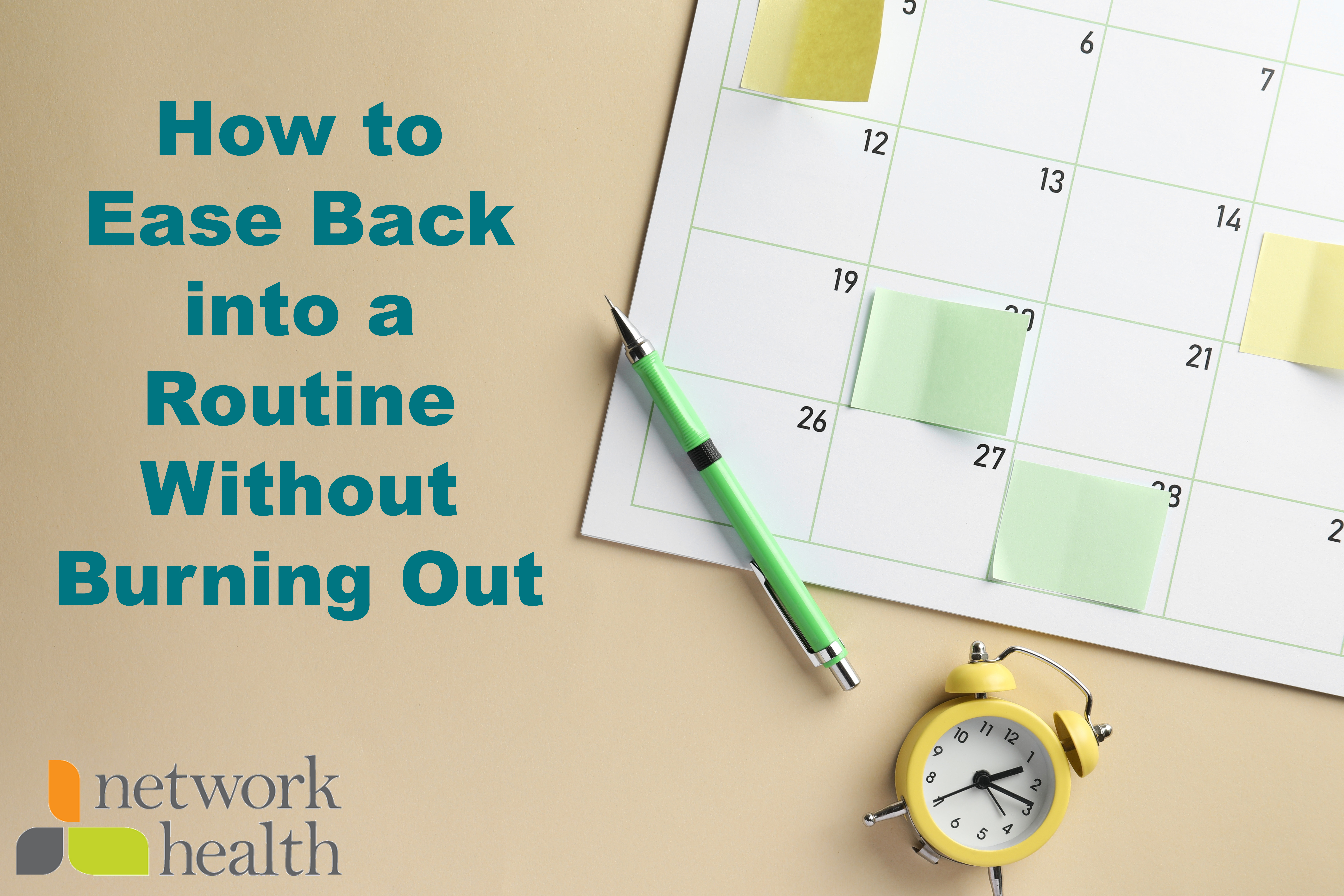It’s Not a Diet, It’s a Lifestyle – The Guide to a Whole-Foods, Plant-Based Lifestyle

Is a Whole-Food, Plant-Based Diet Right for Me?
By Kristy Fast, quality health program coordinator at Network Health
Originally published on December 10, 2019, at 3:14 p.m.
My high school cross country career started my awareness of being healthy. Not only did I need to practice running to get better at my sport, I needed to properly fuel my body. I began to change the way I looked at food. This led me to study health promotion in college, a degree encompassing my love of fitness and healthy eating.
We are always told to eat our fruits and vegetables, drink milk for strong bones and eat meat to get enough protein. But what if that isn't the best way to be healthy? Four years ago, when my son turned six months old and was starting solid food, I wanted to put the best foods in his body. I started to research a whole-foods, plant-based lifestyle. My parents mentioned this way of eating since they had seen the benefits firsthand after switching to these foods. I was resistant because “we need meat for protein” and “milk does a body good.” Then I started researching this way of eating and it made sense. We don't need to eat animal products to be healthy and it might even make our society more unhealthy.
What is a whole-foods, plant-based lifestyle?
Just like the name suggests, a whole-foods, plant-based lifestyle emphasizes whole, minimally processed foods and limits or avoids animal products. It focuses on plants, including vegetables, fruits, whole grains, legumes, seeds and nuts. It limits refined foods like added sugars, white flour and processed oils.
What are the benefits of a plant-based diet?
This lifestyle can help people lose weight and improve overall health. Over 69 percent of U.S. adults are overweight or obese. Eating whole-foods and plant-based introduces high fiber content and eliminates processed foods. This combination helps people shed excess pounds and keep the weight off long-term.
This lifestyle can also help lower your risk and reduce symptoms of some chronic diseases like heart disease and Type 2 diabetes.
What can I eat on a whole-food, plant-based lifestyle?
This question gets asked all the time. I suggest eating a “rainbow” of foods, like the following.
- Fruits- Berries, citrus fruits, pineapple, bananas
- Vegetables- Spinach, tomatoes, broccoli, cauliflower, carrots, peppers, avocados
- Starchy vegetables- Potatoes, sweet potatoes, butternut squash
- Whole grains- Brown rice, rolled oats, quinoa, brown rice pasta
- Legumes- Peas, chickpeas, lentils, black beans
- Seeds, nuts and nut butters- Almonds, cashews, pumpkin seeds, sunflower seeds, natural peanut butter
- Unsweetened plant-based milks- Cashew milk, almond milk, coconut milk, oat milk
- Spices, herbs and seasonings- Basil, rosemary, turmeric, curry, black pepper, salt
- Condiments- Salsa, mustard, nutritional yeast, soy sauce, vinegar, lemon juice
- Beverages- Water, coffee, tea, sparkling water
A typical day of plant-based meals
For breakfast, I eat oatmeal with cashew milk, maple syrup, cinnamon, flax seeds, chia seeds, hemp seeds and walnuts.
For lunch and dinner, I eat items like meatless lasagna soup, chili, pasta, mac and “cheese” (made from potatoes and carrots), sweet potato and black bean quesadilla, veggie pizza with no cheese or a meatless burrito bowl.
Some snacks that get me through the day are grapes, apples, bananas, whole-grain pretzels and peanuts.
I like to drink black coffee and water.
Here are some things I eat at restaurants. Many restaurants offer different options on their menus, don't be afraid to customize.
- Qdoba – Burrito bowl with no meat
- Noodles – Pesto Cavatappi with no parmesan or cream
Other restaurants – big salad, veggie wraps or plant-based burgers
All things in moderation
I am not 100 percent perfect in this lifestyle. It is hard for me to pass up a piece of birthday cake or ice cream. I still see benefits from eating the best I can. My cholesterol levels have dropped, my digestion has improved, and I don't feel sluggish after meals. I get enough protein and stay at a consistently healthy weight. I’ve even learned some of the fastest and strongest athletes are adopting this lifestyle.
If you are interested in this lifestyle, start slowly by reducing your amount of processed foods and animal products like meat, cheese, milk and eggs. Introduce “Meatless Monday,” try a vegan option at a restaurant and use cashew milk instead of cow’s milk.
Tips for a whole-food, plant-based lifestyle and diet
- Eat lots of vegetables. Fill half your plate with vegetables at lunch and dinner. Make sure you include plenty of colors in choosing your vegetables. Enjoy vegetables as a snack with hummus, salsa or guacamole.
- Cook a vegetarian meal at least one night a week. Build these meals around beans, whole grains and vegetables. Search for new recipes on the internet and try something different.
- Include whole grains for breakfast. Start with oatmeal or quinoa. Then add some nuts or seeds, along with fresh fruit.
- Build a meal around a salad. Fill a bowl with salad greens such as romaine or spinach. Add an assortment of other vegetables along with fresh herbs, beans and/or peas.
- Change the way you think about meat. Have smaller amounts. Use it as a garnish instead of a centerpiece.
- Choose good fats. Fats in olive oil, olives, nuts and nut butters, seeds and avocados are healthy choices.
- Eat fruit for dessert. Watermelon, banana, grapes or a crisp apple will satisfy your craving for a sweet bite after a meal. Or use frozen bananas to make ice cream.
Following a whole-foods, plant-based lifestyle is something everyone can do and it changes the way you look at food.
Here are some great resources to get you started
- Forks Over Knives
- Physicians Committee for Responsible Medicine
- Check out the following movies on Netflix –
- What the Health
- Forks Over Knives
- The Game Changers
- Eating You Alive



